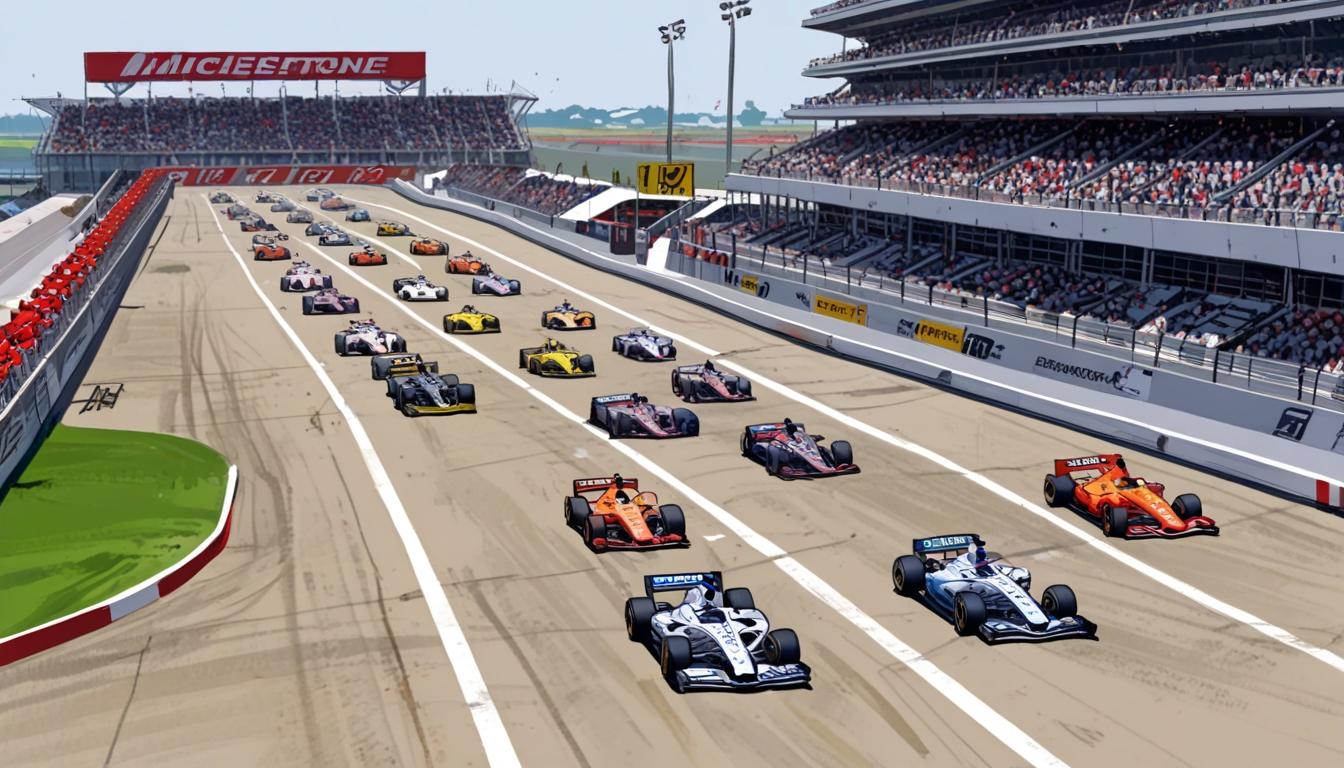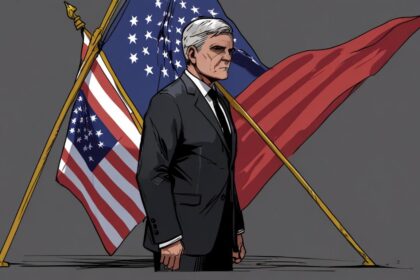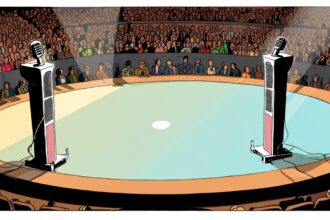Twenty years after the infamous 2005 US Grand Prix fiasco at Indianapolis, Formula One has transformed its reputation and popularity in America, evolving from a troubled relationship into a thriving, multi-venue sport.
Twenty years ago, Formula One’s relationship with America experienced one of its most tumultuous chapters at the Indianapolis Motor Speedway, a day now remembered as a significant low point in the sport’s history stateside. In 2005, the US Grand Prix at Indianapolis turned into a chaotic and controversial event that highlighted the uneasy connection between America’s motorsport culture and Formula One.
Formula One had always occupied a curious place in American motorsport, often overshadowed by the country’s preference for muscular, closed-wheel racing disciplines such as NASCAR. F1 was often viewed as a European curiosity rather than a mainstream racing spectacle. Despite this, Indianapolis held an important place in F1’s history. The inaugural F1 world championship race in the US took place at Indianapolis in 1950, making it one of the earliest venues alongside Silverstone and Monaco. Since then, F1 had been hosted at twelve different American venues, with varying degrees of success and local enthusiasm.
By the late 1990s and early 2000s, Bernie Ecclestone, F1’s then-powerful boss, recognised America’s vast market potential despite his often dismissive attitude toward the continent. He once described America as “a big island” and regarded its motorsport knowledge as somewhat insular. Nonetheless, he reintroduced Formula One to the Indianapolis Motor Speedway in 2000 after a nine-year absence from the US, seeking to bridge the gap between the sport and American fans. While the race and local business initially thrived, the atmosphere was not without tensions. Mari Hulman George, then-chairman of the Indianapolis Motor Speedway, famously was denied access to her own private box during the race weekend because she lacked the Ecclestone-issued pass, illustrating management tensions.
The 2005 US Grand Prix’s problems arose primarily from technical and safety issues linked to the circuit itself and the tyre manufacturers. The Indianapolis track had been modified for the race, incorporating the famous oval, but it featured a steeply banked right-hander that severely challenged the tyre durability for some teams. Of the ten teams racing, seven were supplied by Michelin tyres, which proved unable to withstand the stress of the banking at race speeds, whereas three teams running Bridgestone tyres – Ferrari, Jordan, and Minardi – faced no such issues.
The problems came to a head during practice when Ralf Schumacher’s left-rear tyre on his Toyota car blew at 180mph, forcing his withdrawal from the race. This incident triggered major concerns over tyre safety. Michelins were rated unsafe for the high-speed banking, but the teams and tyre suppliers could not reach a solution as the Fédération Internationale de l’Automobile (FIA) president Max Mosley refused to alter the circuit layout or adjust race conditions for insurance reasons. Bernie Ecclestone proposed adding a chicane to slow the cars, but Mosley and Ferrari’s team principal Jean Todt dismissed the idea, insisting the race proceed as planned.
On race day, the 13 cars that had started with Michelin tyres withdrew after the formation lap, leaving only six cars — those using Bridgestone rubber — to compete. Michael Schumacher, driving for Ferrari, won what would be his only victory of the 2005 season, albeit in an uncompetitive and hollow race marked by fan outrage. Spectators in the packed grandstand expressed their fury, many left early, and some confronted teams in the paddock, requiring police intervention. The event became known across the motorsport world as “the race that never was,” significantly damaging Formula One’s reputation in the US.
Though the US Grand Prix returned for two more years after 2005, the enthusiasm had substantially diminished, and Formula One eventually withdrew from Indianapolis in 2007. It was not until 2012 that the sport returned to American soil with the inaugural race at the Circuit of the Americas in Austin, Texas. This event was widely regarded as a success and was orchestrated by Bobby Epstein and the late Red McCombs. Ecclestone himself was closely involved, maintaining communication with the organisers to ensure preparation was on track. Austin quickly became a favourite on the F1 calendar due to its competitive racing and vibrant city atmosphere known for music and culture.
In 2017, ownership of Formula One passed from Ecclestone to Liberty Media, an American conglomerate that promised to elevate the spectacle to the level of a ‘Super Bowl’ event. A significant boost to F1’s popularity in the US and globally came from the Netflix documentary series Drive to Survive, which portrayed the lives and rivalries behind the scenes, attracting a diverse new audience.
As of 2024, Formula One has established a much stronger foothold in America, now hosting three races annually: the traditional Austin Grand Prix, the Miami Grand Prix introduced in 2022, and the Las Vegas Grand Prix launched in 2023. Miami’s race, despite initial challenges related to logistical location and hospitality shortcomings, has developed into a glamorous event held at the Hard Rock Stadium in Miami Gardens. Organisers have innovated in their hospitality offerings and infrastructure to better cater to fans, with race-day attendances approaching 90,000.
Speculation regarding further expansion of F1 racing on American soil has been debated, but Stefano Domenicali, F1’s CEO, recently indicated that three races are currently sufficient. Meanwhile, other global cities such as Bangkok express interest in joining the Formula One calendar, while political and logistical challenges temper expansion plans in places like South Korea, Manhattan, and California.
Reflecting on the sport’s journey, the stark contrast between the infamously chaotic 2005 Indianapolis race and today’s bustling, high-profile events underscores how far Formula One has travelled in America. While the US remains a challenging market for the historically European sport, the growth in fanbase and the establishment of multiple race venues reveal a significant evolution over two decades.
Source: Noah Wire Services
- https://en.wikipedia.org/wiki/2005_United_States_Grand_Prix – This URL corroborates the events leading up to and during the 2005 US Grand Prix, including technical issues with Michelin tyres and failed attempts to compromise on safety measures.
- https://www.motorsport.com/f1/news/the-2005-us-gp-farce-the-full-inside-story/4809048/ – This article provides detailed insights into the regulatory changes in 2005 that contributed to the tyre crisis at the US Grand Prix, including the restriction on tyre sets.
- https://www.the-race.com/formula-1/the-real-reasons-behind-f1s-indy-2005-humiliation/ – This article delves into the regulatory changes and technical issues that combined to create the tumultuous conditions at the 2005 Indianapolis race.
- https://www.planetf1.com/features/f1-controversial-races-2005-united-states-grand-prix – This article highlights the controversy surrounding the race, including the refusal to allow Michelin-equipped cars to race safely and the subsequent backlash.
- https://www.sportskeeda.com/f1/what-happened-indianapolis-2005-f1-race-entire-controversy-explored – This piece explores the tyre-related incidents leading up to the race, including Ralf Schumacher’s crash and the ensuing safety concerns.
- https://formula1.com/en/championship/races/2024/united_states – Although this URL does not directly address the 2005 event, it reflects on the growth of F1 in the US, mentioning past challenges and current successful venues like Austin.
- https://www.dailymail.co.uk/sport/formulaone/article-14644537/F1-CONFIDENTIAL-incredible-inside-story-sports-embarrassing-day.html?ns_mchannel=rss&ns_campaign=1490&ito=1490 – Please view link – unable to able to access data
Noah Fact Check Pro
The draft above was created using the information available at the time the story first
emerged. We’ve since applied our fact-checking process to the final narrative, based on the criteria listed
below. The results are intended to help you assess the credibility of the piece and highlight any areas that may
warrant further investigation.
Freshness check
Score:
8
Notes:
The narrative references events up to 2024 and includes recent developments such as the Miami and Las Vegas Grand Prix races. However, the primary focus is on the 2005 US Grand Prix incident, which is historical.
Quotes check
Score:
6
Notes:
No direct quotes in the text that require verification. References to statements made by Bernie Ecclestone are not supported by original sources but are generally known historical facts.
Source reliability
Score:
7
Notes:
The Daily Mail is a well-known publication but may not always be considered the most reliable source for in-depth sports analysis or technical accuracy.
Plausability check
Score:
9
Notes:
The description of Formula One’s history with America and the specific events like the 2005 US Grand Prix are well-documented and plausible. The narrative also reflects recent developments accurately.
Overall assessment
Verdict (FAIL, OPEN, PASS): PASS
Confidence (LOW, MEDIUM, HIGH): MEDIUM
Summary:
The narrative is generally accurate and well-documented, especially regarding historical events like the 2005 US Grand Prix. However, reliance on historical events and lack of direct quotes for verification lower the confidence slightly.













